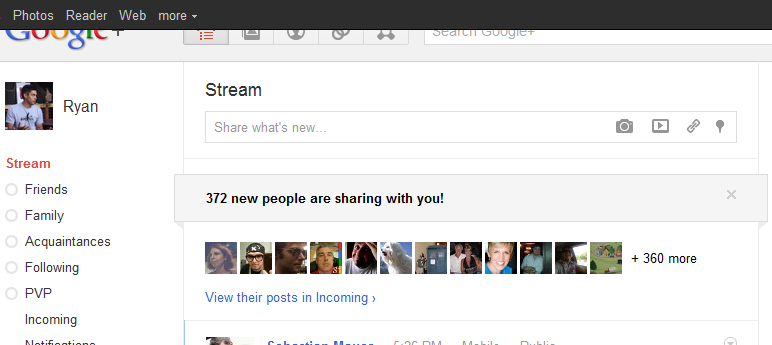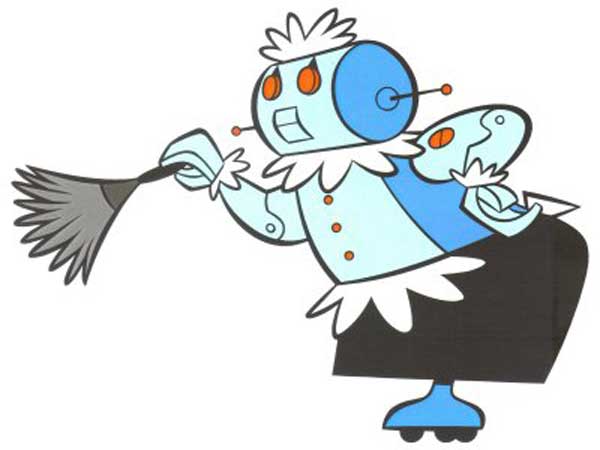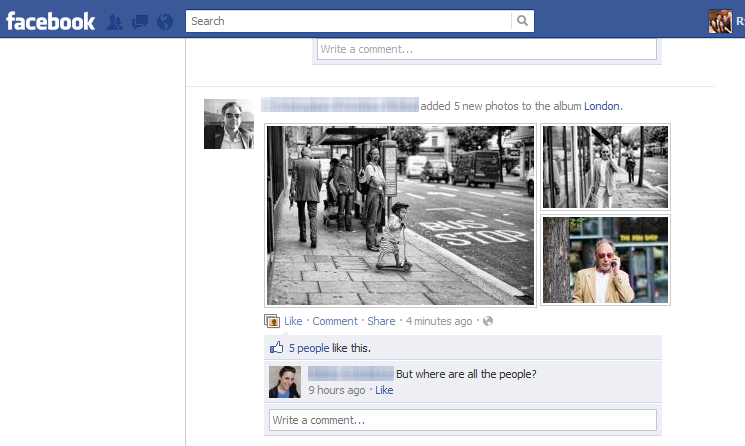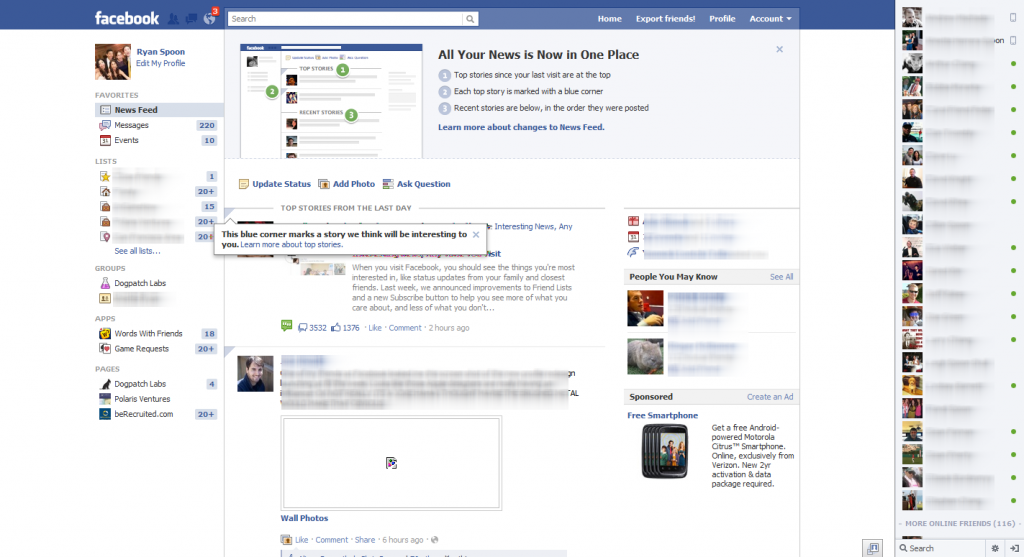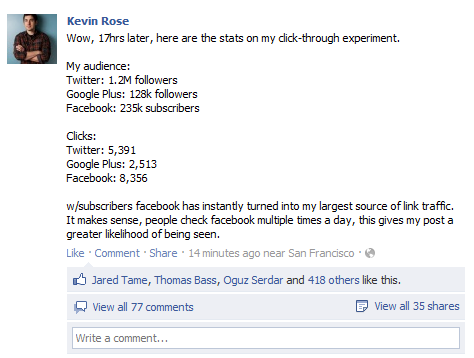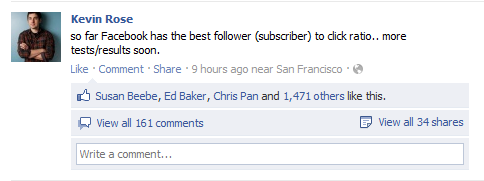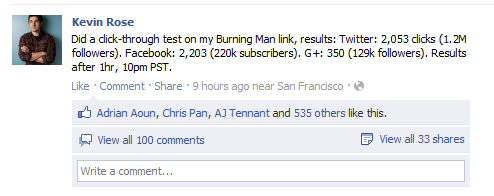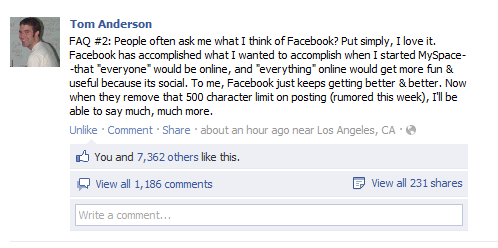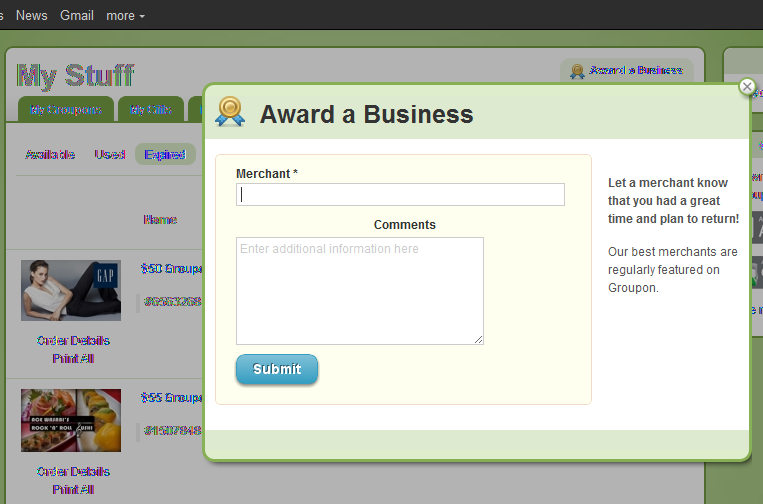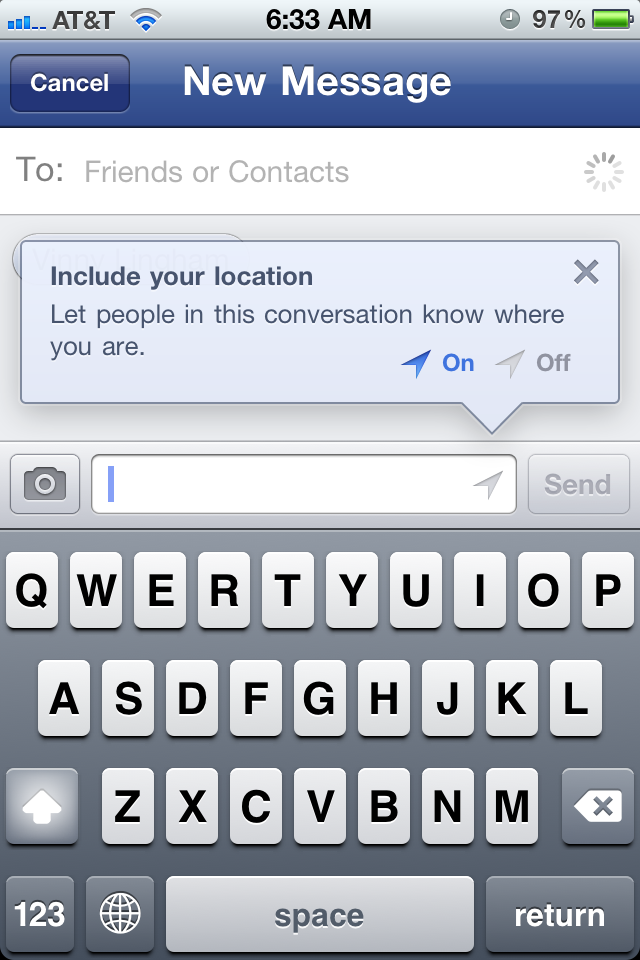A handful of quick, disorganized thoughts on Facebook's announcements / releases this week:
Immersive
The activity ticker is immersive and really amplifies 'viral' potential. I have 'liked' (and listened and read and soon to be much watched, etc) so many more 'things' because each one of those actions is now viewable & actionable (whereas it was previously up to FB to cluster it as 'top news'). It's been fun and addictive. But it also requires a tighter social graph - so I've been unsubscribing from some brands and pages.
Relies on the Ticker
The movement to Facebook curated "Top News" and the ticker for the continuous stream is great for publishers / developers... assuming that users do in fact use the ticker (heavily I may add!). Will users watch and engage with the ticker when more content appears in it? Or if developers misuse the ticker?
Publisher Opportunity
Between the ticker and the open graph - publishers should be rushing to take advantage. There are two major opportunities:
- Ticker and canvas apps: increased virality, findability, sharability, etc. Actions will be amplified in ways that the feed couldn't. There is a first mover advantage... see Spotify.
- Open graph: organize your content & actions internally... or become a node within the greater Facebook ecosystem. And the ability to then tie those into the Facebook profile and canvas applications is very powerful. Again, see Spotify:
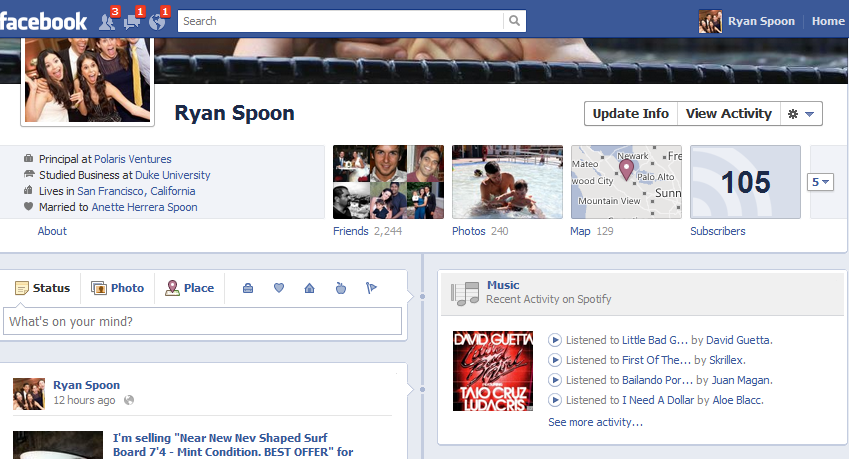
Open Graph: More Than Games
This is an opportunity that opens the ecosystem beyond gaming and digital media. The open graph is an opportunity for industries like e-commerce that previously struggled to drive virality and make engaging on-Facebook experiences.
More than Spotify - Just Wait
Spotify was the marquee integration - and users are complaining that there is simply too much Spotify. That's not a Facebook or Spotify issue - it's a timing issue. More will come. And with the ticker, open graph, etc - the opportunity for new innovations is terrific.
For instance, here's the Washington Post's Social Reader. Between the ticker, the graph and their canvas app - this is truly social news reading. It really shines on the iPad (so give it a spin there).
Timeline is Gorgeous
Timeline represents the shift from newsfeed to identity & memory. That's a big, long-lasting idea. The product video was spectacularly done - reminding me of the emotional connection that Apple and Facetime created with their ad campaign:
We Need Mobile...
Timeline doesn't work on mobile. At least not how it is imagined and was demonstrated. For instance, on the iPad, you cannot scroll across the timeline or move the "cover" photo. It's time for a mobile experience that allows timeline, ticker and ticker's developer ecosystem to really shine.
In-Line Expansions
More to come here... but it is clear that Facebook is looking and behaving more like a browser. The use of expansion units is an attempt to integrate Facebook's ever-growing list of features... without relying on new pageviews.
